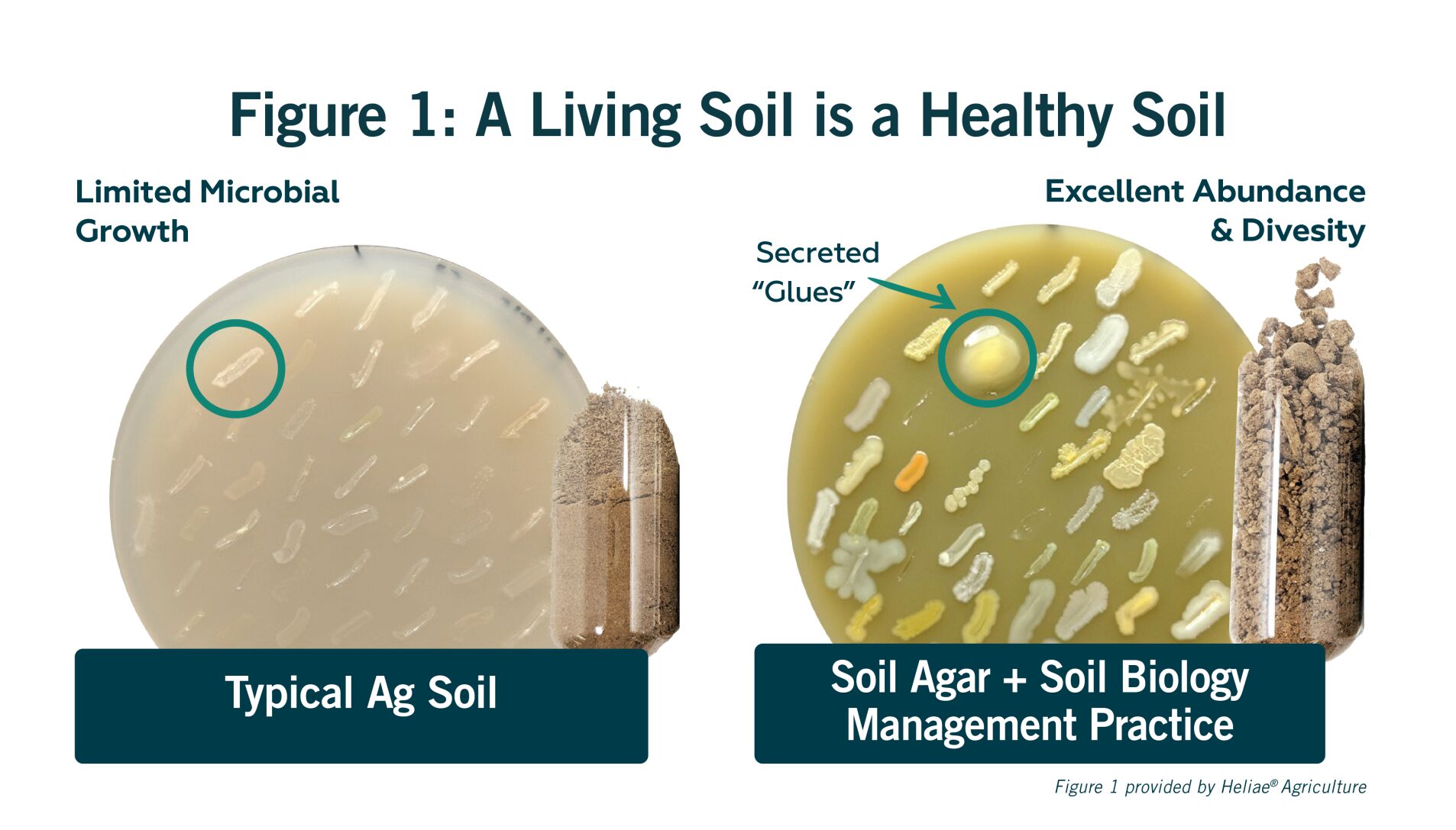New Frontiers for Nutrient Management
The rise in fertilizer prices over the past year has left many growers scratching their heads on how they will feed their crop for the season without breaking the bank. Here, I will help shed some light on an overlooked management partner (e.g., soil microbes) to help free up plant available nutrients and stretch your fertilizer dollar even further.
Nutrient and soil management can be split into three overlapping “spheres” of influence. The first two spheres include physical management (e.g., tillage, deep ripping for compaction, etc.) and chemical management (e.g., soil amendments, manures/composts, and fertilizer applications). The biological management strategy is new to many; however, growers report positive results as they deploy a deliberate strategy to utilize bacteria and fungi as key partners in the field.
This approach has been referred to as soil health management and can be defined as the interaction between organisms and their environment in a soil ecosystem (Figure 1). One key advantage of having an improved living component of the soil and better soil health is improved fertilizer use efficiency (more yield per unit of fertilizer applied).
Healthy Soil Stretches Your Fertilizer Dollar Further
Research supports improved soil biology and optimized soil health can positively influence fertilizer use efficiency and yield goals. In short, a healthy microbial community has individual members (e.g., species) that can contribute directly to plant nutrient availability. For example, some microbes can make more nitrogen available from the air or have the chemical machinery to make phosphate and potassium more plant available. Some species can free up nutrients that are locked up in bulk sources (e.g., manures and composts). Thus, microbes can help you get more out of your fertilizer inputs and into the crop where you need it instead of lost to the environment or tied up with other minerals. The key is to deliberately manage the microbes.
Feed the Soil Biology
Research shows food scarcity will severely limit the activity of your soil biology and microbes will remain dormant until conditions improve. Thankfully, soil microbes respond readily when provided a food source and this can be used as a crucial management strategy. You have many choices on the market, including microalgae, compost teas, molasses, fish emulsions, etc. Contact your local crop adviser or local extension agent for more information on which choice is best for your operation.
Add Soil Biology
Another option is to add biology to the soil. The strategy here provides selected species of bacteria or fungi to the soil and put them to work for you. If you choose this option, make sure your product is alive when going out into the field. Also, be sure to match the identity of the inoculant to its function in the soil so you don’t have a mismatch in strategy.
Soil microbes can also be managed over medium to longer time frames as well (Table 1). Management strategies here include the use of mulches and compost, reducing tillage, and planting cover crops. These topics are discussed further in the articles in the reference section.
Table 1 – Practices to help improve soil biology and improve fertilizer use efficiency.
|
Management Time Frame |
Component |
Practice |
|
Short Term Impact |
Feed Existing Biology |
Provides the soil microbiome a food source |
|
Add Biology |
Provide bacteria and fungi to soil to enhance nutrient cycling or manure/compost decomposition |
|
|
Medium Term Impact |
Add Mulches, Manures, Compost |
Provides a bulk carbon and nutrient source |
|
Implement Cover Cropping |
Keeps living roots in the soil which feeds the microbes and protects soil from erosion |
|
|
Longer Term Impact |
Reduce tillage |
Helps keep microbial communities intact by reducing physical disturbance |
Fertilizer prices have forced growers to find creative solutions to feeding the crop and supporting modern yield goals. A biological management strategy can help free up nutrients for the crop and help promote enhanced plant uptake, increase fertilizer use efficiency, and stretch your fertilizer dollar even further.
About the Author
Dr. Karl Wyant serves as the Vice President of Ag Science at Heliae® Agriculture where he oversees the internal and external PhycoTerra® trials and agronomy training. To learn more about soil health and regenerative agricultural practices, you can follow his webinar and blog series at PhycoTerra.com.




